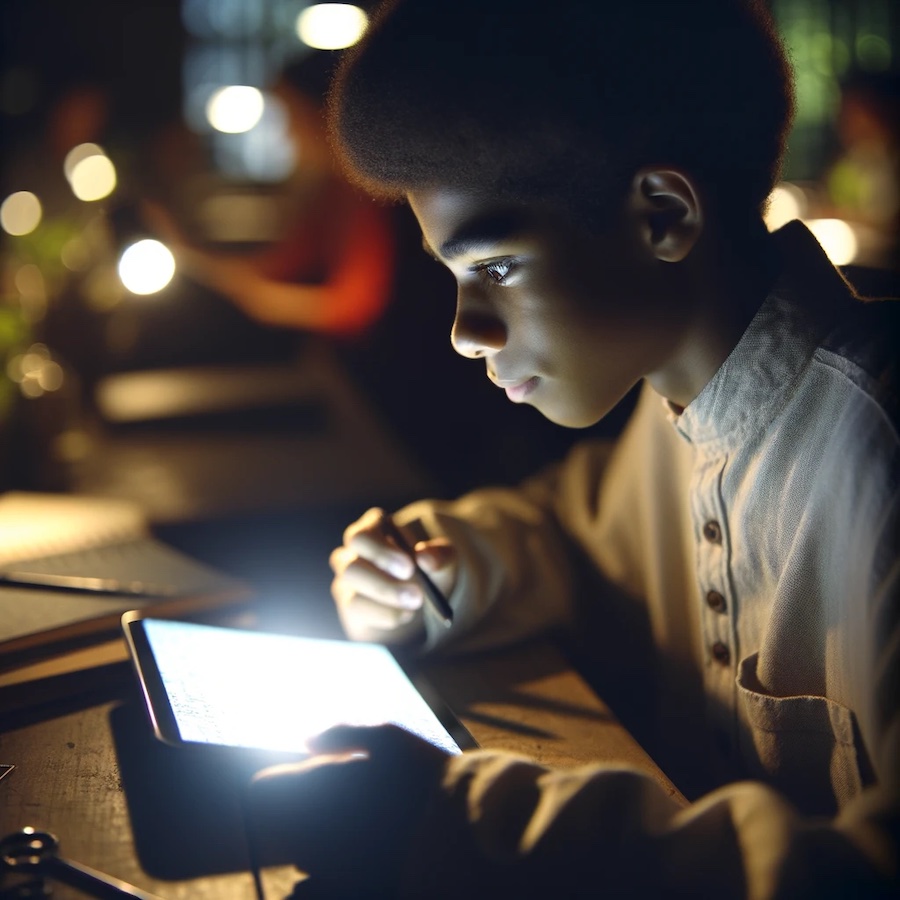The Digital Classroom Dilemma
In a world where kids often know Alexa better than storybook characters, we educators are tasked with a delicate balance. How do we mix the exciting digital world with essential human connections and classic learning? AI offers incredible opportunities for tailored learning, but it’s not without challenges. It’s crucial to remember that the value of screen time varies greatly.
One particular experience comes to mind. At a school I worked, we had smart boards—but their complexity often outweighed their benefits. This experience wasn’t about the shortcomings of edtech companies, but rather highlighted the need for technology that aligns with educators’ skills and students’ needs. Sometimes, simpler tools, adequately used, are more effective than complex ones. This realization is particularly relevant now, as we cautiously integrate AI into our classrooms. The ethical implications and the advanced personalization capabilities of AI require a thoughtful approach.
Understanding the Impact of Excessive Screen Time
Excessive screen time impacts students differently, be it digital or AI-driven.
For younger kids, screen time can hinder development of social skills and physical abilities.
For teens, the social dynamics of online platforms and AI-driven content present unique challenges like cyberbullying and self-image issues.
In classrooms, our approach to screen time must consider these varying impacts.
Regardless, too much screen time can affect students adversely:
- Sleep Disruptions: Remember those nights spent tossing and turning? Excessive screen time, especially before bed, can cause similar restlessness in students.
- Academic Challenges: Ever wondered why some students might be underperforming? Look at their screen time; there’s often a correlation.
- Social Skills: In a world of emojis and likes, are we forgetting the art of face-to-face conversations?
But how does this knowledge help us in our classrooms?
Managing Screen Time: The Art of Balance
Setting limits on digital consumption is crucial.
We must also encourage diverse activities, especially for younger children, to promote physical and social development.
With teens, our focus should shift to managing AI-driven interactions, promoting critical thinking and digital literacy. Teach them about how algorithms work and how it may or may not control their lives. Teach them what and how they could deal with this.
To help them manage screen time, why not try:
- Encouraging Physical Activities: Remember the days when ‘play’ meant running outside, not just thumb exercises on a screen? This isn’t just for kids. This includes getting your teens to try out sports.
- Educational Prioritization: It’s about making screen time count. Can we turn it into a learning experience rather than just a distraction? If you were to give students tablet time, could it be that it were for an educational game, instead of one just for fun?
Beyond AI and EdTech: Broader Screen Time Considerations
While EdTech use doesn’t pose threats as much as the promise and perils of AI does, we need to manage all digital engagement mindfully. It’s not just about the ethics of AI we need to think about in the digital space; it’s about maintaining a healthy digital diet for our students.
Empowering Students in a Digital World
Empowering students means making them active in their digital consumption.
Using tools like Project Zero’s Digital Hygiene, we can help students make informed choices.
For younger kids, most especially, explaining the consequences of their digital actions and making them part of the conversation is key.
Is there a way you can do the following?
- Active Learning vs. Passive Consumption: Encourage students to be the drivers, not just passengers, in their digital journey. Can they tell the difference?
- Analytical Skills: It’s not just what they learn; it’s how they learn it. Are they questioning what they see on their screens? No matter how young they are, it’s never too late to start teaching them about AI and how this will affect them. Start with what they know. They’ve probably heard of Siri or Alexa, use that knowledge to your advantage.
The Human Touch in a Digital World
In this digital age, let’s not forget the power of a human smile, a high-five, or a thoughtful conversation. Amidst all this progress with technology, the human element remains key. We need to go beyond the talk of screens and algorithms. Take things offline. Let the kids have conversations with each other, collaborate on projects exploring tech together. This approach ensures that our students learn not just to navigate digital landscapes but also to build meaningful human connections.
Isn’t it that the best learning happens through human interaction? Keeping the human in the loop when it comes to AI is crucial. We must use technology to enhance our capabilities, while also pausing to reflect. What do we think about this information? What insights can we provide that AI cannot? How can we add more care and intentionality to this process?
Practical Steps for Educators
“So What?”
The role of AI in education isn’t just a trend; it’s a tool that, if used wisely, can enhance learning.
Educators can take practical steps like monitoring screen time, becoming intentional about tech use. selecting appropriate AI tools, teaching digital literacy, and encouraging interactive learning. It’s about making technology a part of learning without letting it dominate.
“Now What?”
Here’s what you can do right after reading this article:
- Monitor Screen Time: Just like you plan lessons, plan how screen time is used in your classroom.
- Educational AI Usage: Choose AI tools that complement your teaching style and curriculum.
- Promote Digital Literacy: Teach students about digital footprints and responsible online behavior.
- Interactive Learning: Introduce activities that require more than just staring at a screen.
- Discussion and Reflection: Make screen time a topic of conversation. What do students think about their screen habits?
Conclusion: Striking the Right Digital Balance
There’s a lot of talk about keeping the human in the loop with AI. What does it mean for us as educators and our students? We must integrate checkpoints in our thinking, using technology to uncover details and patterns otherwise unnoticed. We must also question and reflect: Is this information accurate? What insights do I have that AI doesn’t? How can we add more care and intentionality to our digital interactions? Moreover, we must ensure space for collaboration and conversations beyond AI, fostering human connections. Let’s harness the power of AI to inspire, engage, and connect, ensuring we don’t lose sight of the value of human touch and real-world impact.





